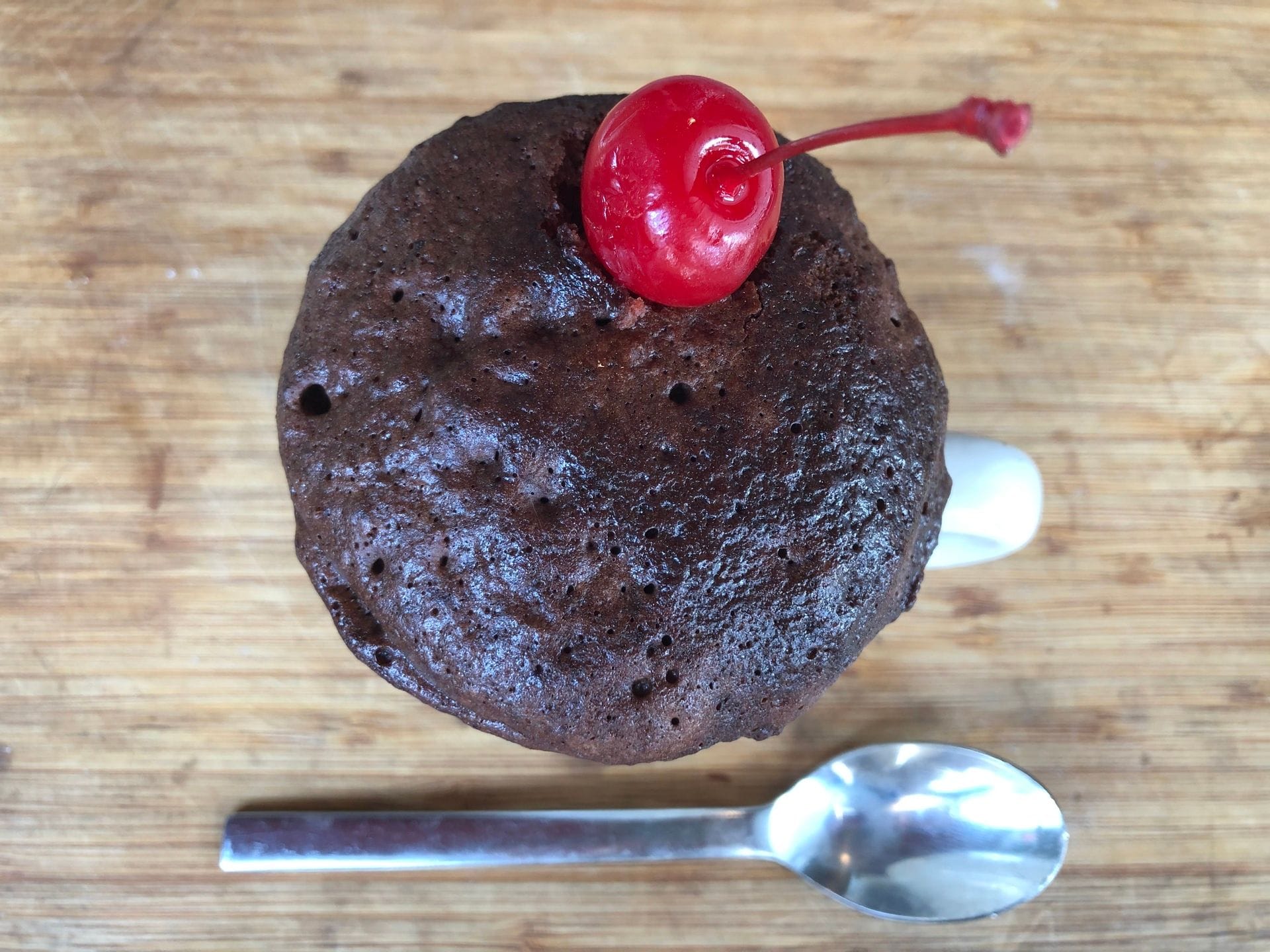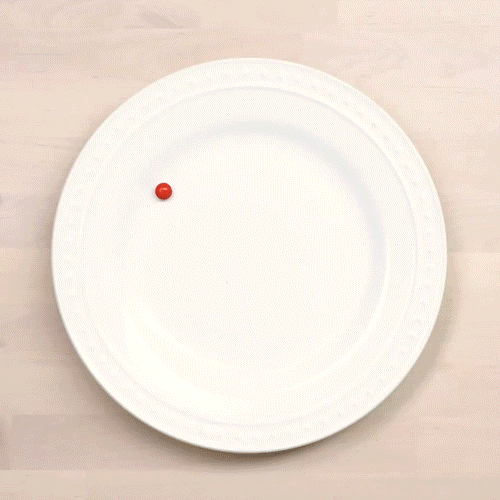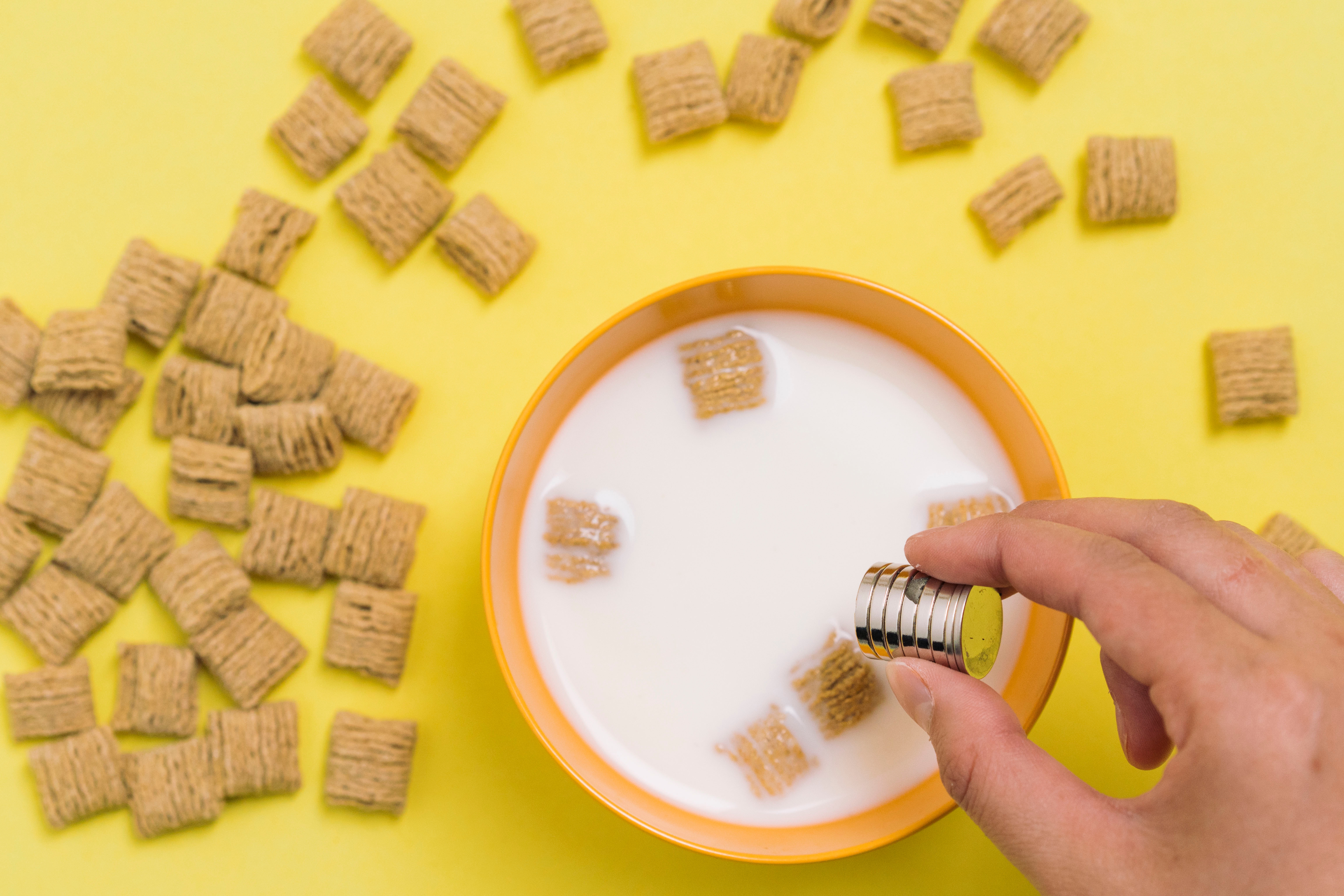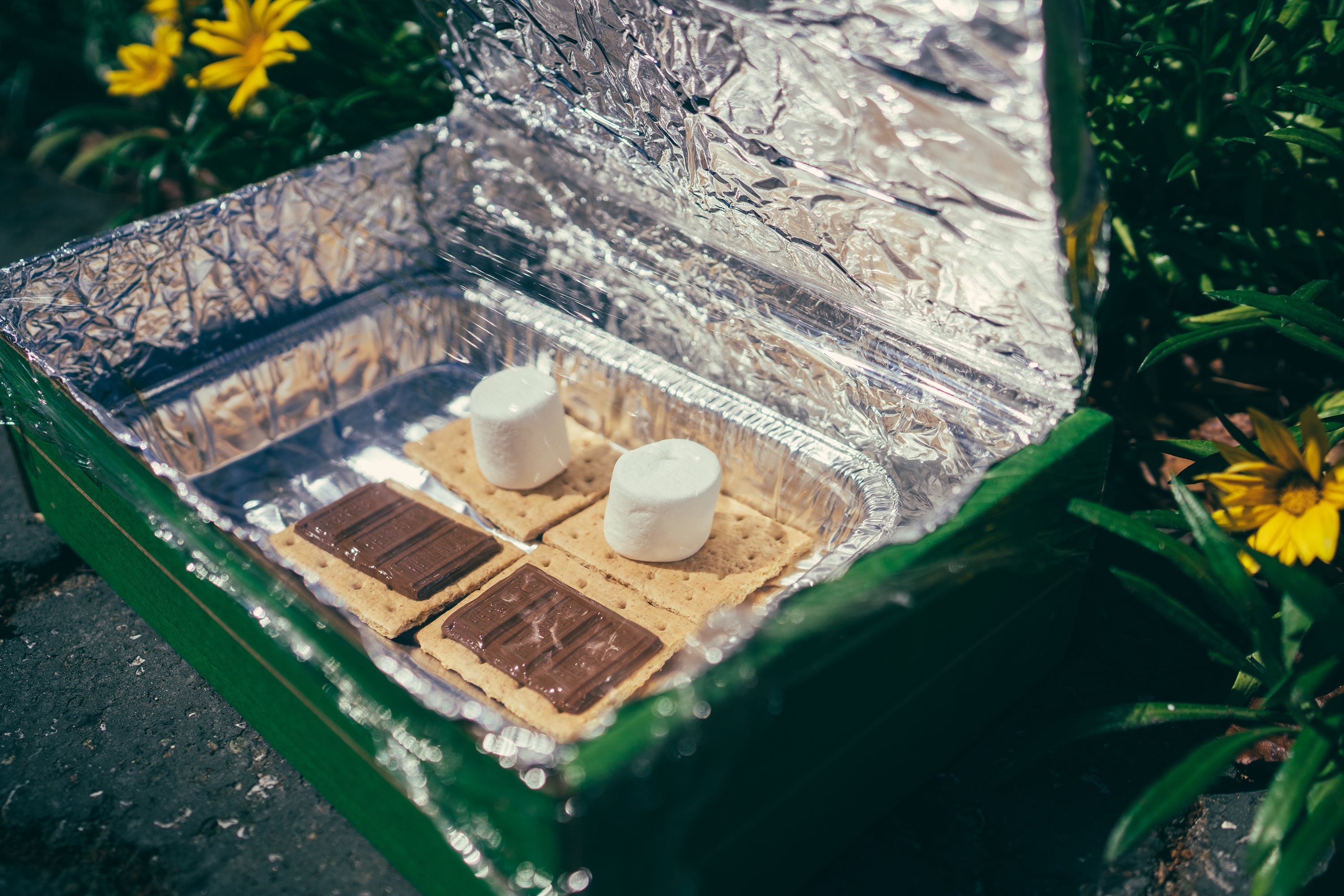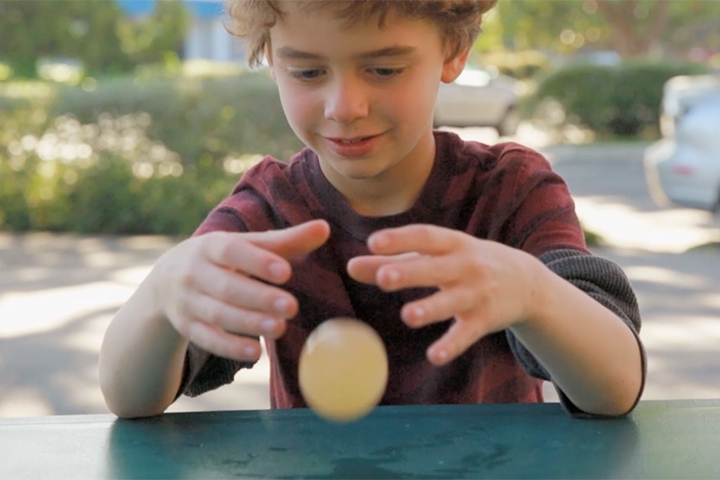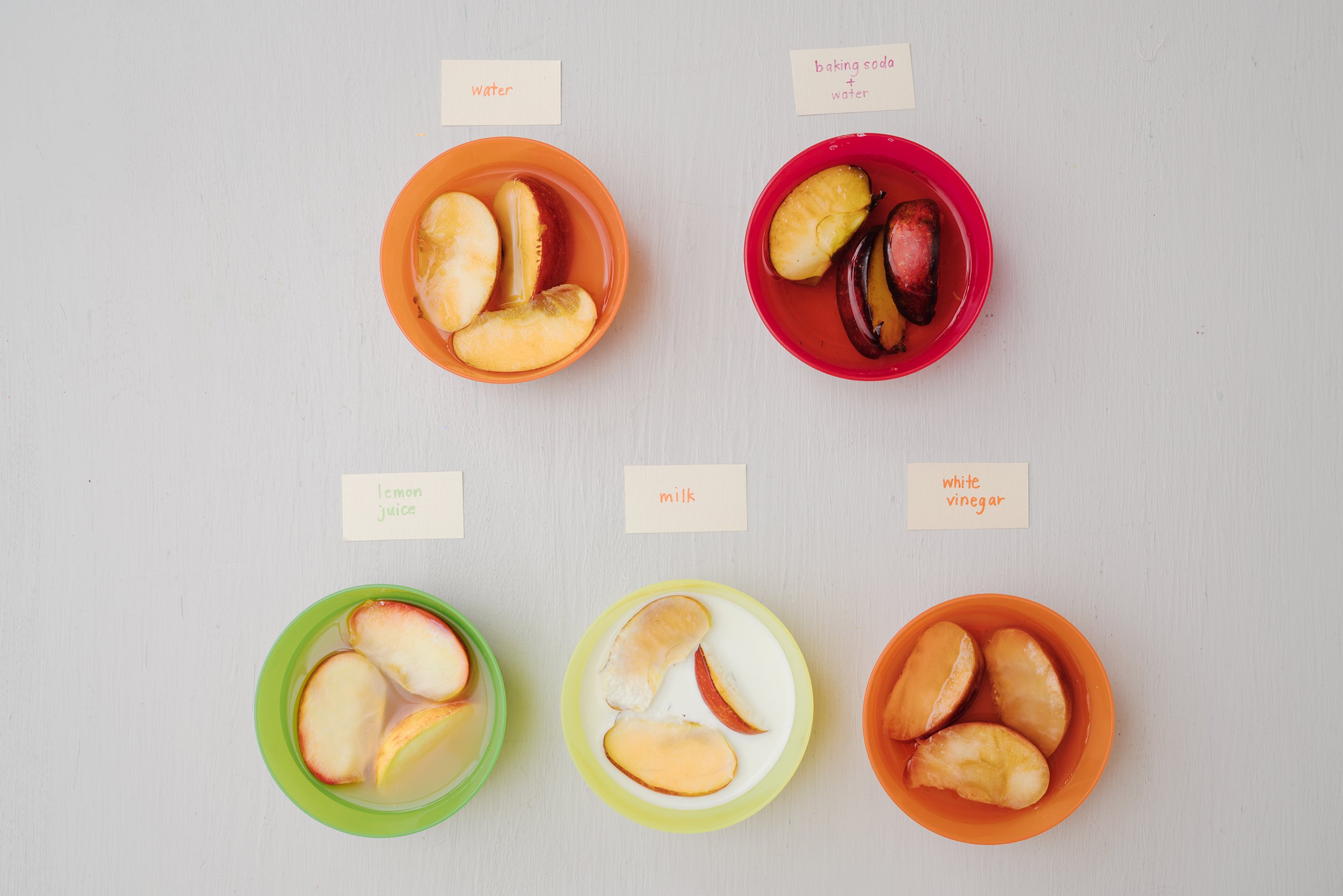- Turn Milk into Cheese
(Ages 5-16)
You may remember hearing about curds and whey from the old nursery rhyme about Little Miss Muffet. Well, this kitchen science experiment will teach you what curds and whey are, and you’ll even make some yourself! Curds and whey are a product of cheesemaking! Milk is made up of proteins, sugars, fat, minerals, vitamins, and enzymes. When you add an acid like lemon juice to warm milk, it causes molecules of one of the proteins in milk to bond to one another. That forms a solid lump of protein which is also known as a cheese curd (the leftover liquid is called whey.) You can eat cheese curds on their own (they taste like ricotta cheese) or top with honey or fruit for an awesome treat.
Want to explore more kitchen science experiments? Explore the tastier side of learning with Science of Cooking: Ice Cream from the KiwiCo Store!
- Magic Mug Cake
(Ages 5-16)
Normally, a cake would take an hour or more to make in an oven, but with a microwave oven, you can make one in minutes! Microwave ovens use waves of energy called – you guessed it – microwaves to cook food quickly. The microwaves go into the food and make water molecules inside move around really fast. The movement creates heat which cooks the food. But the microwave is just one part of this scientific process. First, you need to mix up ingredients. Two of the ingredients are key to making a tasty mug cake! Baking powder will make your cake spongy because it produces gas bubbles that get trapped in the batter as it cooks. The egg will help your cake rise because it has proteins that create a strong structure. Without these ingredients, your cake will look like soup! Experiment with the other ingredients to customize your mug cake. What will you add to give it a whole new flavor?!
Want to explore more kitchen science experiments? Explore the tastier side of learning with Science of Cooking: Bread & Butter from the KiwiCo Store!
- Skittles Science Fair Project
(Ages 3-8)
If you have more candy than you know what to do with, try this experiment with your little ones. Sometimes playing with food is inevitable, but with sweet science comes knowledge!
Want to learn more about chemistry without the hassle of gathering materials? Explore 11 fun chemistry experiments with a Chemistry Play Lab from the KiwiCo Store!
- Celery Experiment
(Ages 3-8)
Has your child ever wondered how plants get water from their roots all the way to their leaves? This simple celery experiment shows how colored water travels up a celery stalk!
Looking for more kitchen learning projects to do with your young scientist? Roll and stamp your way to early math exploration with a Fun Dough Pasta Maker from the KiwiCo Store!
- Gummy Bear Science Project
(Ages 5-11)
It is time for these little bears to grow up...and out with this gummy bear science project! Watch as gummy bears grow and shrink in different liquids in this kid-friendly experiment. This project is open for exploration and discovery, so kick things off by asking your child what they will happen to a gummy bear in water. Will it dissolve? Will it shrink or grow? Will it fall apart? How long will it take? Don’t forget to grab a notebook to write down their ideas so you can compare what they predicted with what actually happens! You’ll start to see results in just a few hours, and you’ll definitely see big changes in size in just a day.
Want to explore more kitchen science experiments? Explore the tastier side of learning with Science of Cooking: Ice Cream from the KiwiCo Store!
- Magnetic Cereal
(Ages 5-8)
Pull a couple of cereal boxes from the shelf and test their iron content with this simple experiment. It's fun to see your breakfast whiz across the surface of milk using a magnet!
Want to explore more kitchen science experiments? Explore the tastier side of learning with Science of Cooking: Ice Cream from the KiwiCo Store!
- Milk Swirl Experiment
(Ages 3-11)
See how a drop of soap can create an explosion of color with this easy experiment!
Want to learn more about chemistry without the hassle of gathering materials? Explore 11 fun chemistry experiments with a Chemistry Play Lab from the KiwiCo Store!
- Solar Oven
(Ages 5-16)
Have you ever tried to harness the power of the sun to create some s'mores? Camping is the perfect time to do it. During the day, I set up my DIY solar oven and stacked up my ingredients inside. Then, I just let it sit while I went for a quick hike around the campsite. When I returned, I had a delicious, melted snack that was ready to eat thanks to my solar oven!
Want to explore more kitchen science experiments? Explore the tastier side of learning with Science of Cooking: Bread & Butter from the KiwiCo Store!
- Bouncy Egg
(Ages 5-16)
Can you make an egg bounce? Try this simple chemistry experiment and see the shell of an egg dissolve! You'll be left with a surprise and a fun, bouncy egg.
Discover everything that eggs have to offer with Eggsperiments from the KiwiCo Store! Use the scientific method with a series of egg-based experiments that explore chemistry, physics, and biology.
- Apple Experiment
(Ages 5-11)
Fall is coming, which means apple season is right around the corner. We love eating apple slices as a healthy snack. Try out this apple experiment with some basic kitchen goods to see how you can keep your slices from browning!
Want to explore more kitchen science experiments? Explore the tastier side of learning with Science of Cooking: Bread & Butter from the KiwiCo Store!
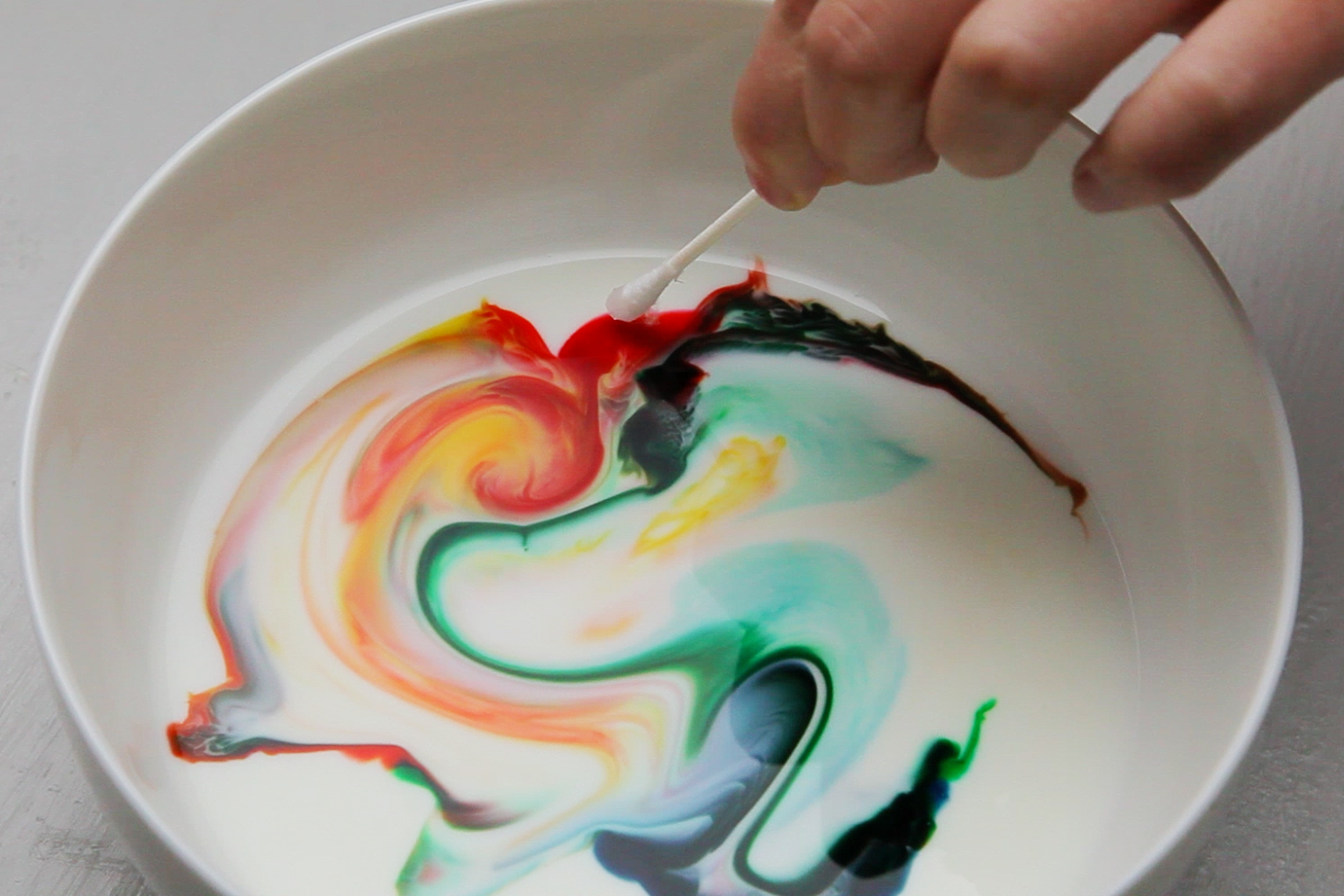
10 Food Science Experiments for Kids
Unlock the mysteries lurking in your pantry with science! Make a gummy bear double in size, toast marshmallows using solar power, use microwaves to make a chocolate cake in under a minute! This list of wacky ffood science experiments will reveal the hidden world of weird physics and strange chemical reactions involved in everything we eat. Next time you're at the grocery store, tell you're mom to get the giant bag of skittles. After all, it's for science!

